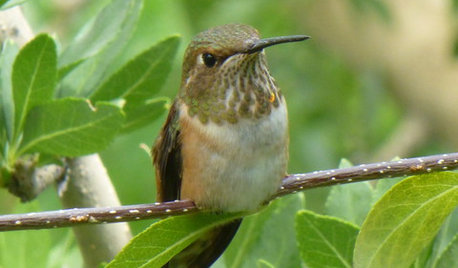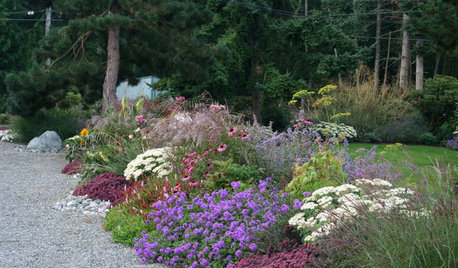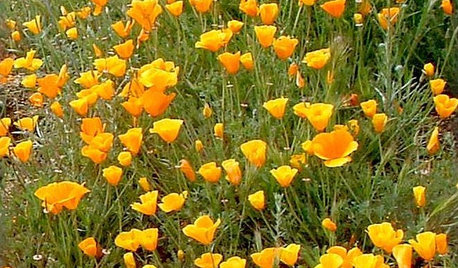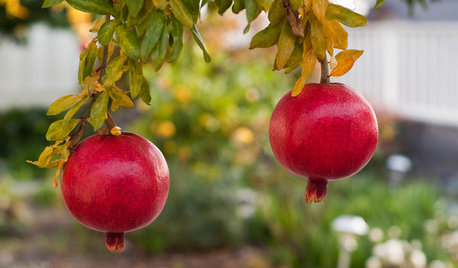no flowers, anymore
Related Stories

SPRING GARDENING7 Spectacular and Practical Spring-Flowering Trees
Put on a beauteous show in the garden with a landscape tree awash in flowers — just do your homework first
Full Story
GARDENING GUIDES8 Flowers That Hummingbirds Adore
To draw those mesmerizing little birds to your garden or doorstep, plant these flowers that are attractive in more ways than one
Full Story
MOST POPULARHow to Design a Colorful Flower Bed
Fall planting: Delight the eye through 3 seasons with bright flowers placed just right. Late summer is the time to plan
Full Story
GARDENING GUIDESHouzz Call: What’s Your Favorite Backyard Beauty?
The simple, honest daisy is this writer’s go-to garden flower. We want to hear which plant, flowering or otherwise, gives you special joy
Full Story
GARDENING GUIDESGreat Design Plant: California Poppy
Fall planting: California's state flower offers a glorious spring show and spreads readily in gardens under the right conditions
Full Story
GARDENING GUIDESWhat’s in a Name? See 6 Wildflowers That Aren’t ‘Weeds’ at All
Dispel the stereotypes of weeds and try these wildlife-supporting native wildflowers in your garden
Full Story
GARDENING GUIDESGreat Design Plant: Bugle Weed, a Quick Ground Cover
It’s highly adaptable, suppresses weeds, reduces erosion and provide weeks of bright flowers. Just watch for invasiveness
Full Story
DECORATING PROJECTSFashion a Greens-Laden Tablescape for Spring
Pair lush greenery and flowers with milk glass for an arrangement that will make any meal memorable
Full Story
GARDENING GUIDESNorthern California Gardener's October Checklist
It's still a great time to plant flowers, vegetables and even bulbs in California gardens this month, thanks to predictably mild weather
Full Story







carolyn137
daninthedirt (USDA 9a, HZ9, CentTX, Sunset z30, Cfa)Original Author
Related Professionals
Mitchellville Landscape Architects & Landscape Designers · Saint Louis Park Landscape Architects & Landscape Designers · Tomball Landscape Architects & Landscape Designers · Allentown Landscape Contractors · Canton Landscape Contractors · Galveston Landscape Contractors · Lees Summit Landscape Contractors · Long Beach Landscape Contractors · Placerville Landscape Contractors · Leon Valley General Contractors · Troutdale General Contractors · Foothill Farms Decks, Patios & Outdoor Enclosures · Foothill Farms Decks, Patios & Outdoor Enclosures · King of Prussia Decks, Patios & Outdoor Enclosures · Medford Decks, Patios & Outdoor Enclosurescarolyn137
digdirt2
daninthedirt (USDA 9a, HZ9, CentTX, Sunset z30, Cfa)Original Author
ABlindHog
carolyn137
daninthedirt (USDA 9a, HZ9, CentTX, Sunset z30, Cfa)Original Author
digdirt2
daninthedirt (USDA 9a, HZ9, CentTX, Sunset z30, Cfa)Original Author
missingtheobvious
seysonn
daninthedirt (USDA 9a, HZ9, CentTX, Sunset z30, Cfa)Original Author
missingtheobvious
daninthedirt (USDA 9a, HZ9, CentTX, Sunset z30, Cfa)Original Author
digdirt2
daninthedirt (USDA 9a, HZ9, CentTX, Sunset z30, Cfa)Original Author
seysonn
yardenman
daninthedirt (USDA 9a, HZ9, CentTX, Sunset z30, Cfa)Original Author